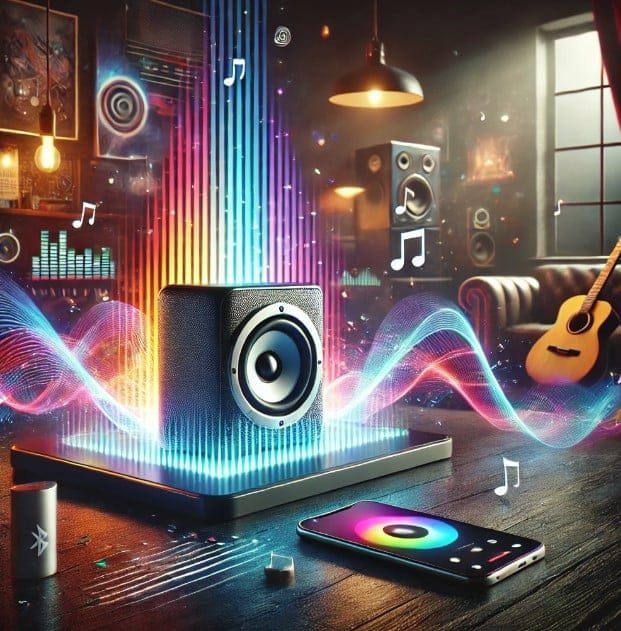
Introduction
Hey there! If you’re like me, you know that not all Bluetooth speakers are created equal. They might all play music, but the sound quality can vary wildly. So, what should you look for when hunting for that perfect Bluetooth speaker to get the best sound quality? Let’s dive into the nitty-gritty and find out!
Understanding Sound Quality
Before we get into the specifics, let’s define “sound quality.” It’s all about how accurately the speaker reproduces the audio. High-quality sound should be clear, balanced, and free from distortion. But what does that mean in terms of specs and features?
Key Factors to Consider
Frequency Response
One of the first things to check is the frequency response. This tells you the range of sounds the speaker can produce, from the deepest bass to the highest treble. A wider range usually means better sound quality because the speaker can handle more types of audio. Look for speakers with a frequency response that covers at least 20Hz to 20kHz – that’s the range of human hearing!
Total Harmonic Distortion (THD)
Total Harmonic Distortion (THD) is a fancy term for how much distortion you might hear at higher volumes. A lower THD means the speaker can handle loud sounds without adding unwanted noise. Ideally, you want this number to be below 1%.
Signal-to-noise ratio (SNR)
Signal-to-Noise Ratio (SNR) measures how much background noise you’ll hear compared to the audio. A higher SNR means less background noise, which is what you want for clear sound. Aim for a speaker with an SNR of at least 70 dB.
Driver Size and Type
The drivers are the parts of the speaker that produce sound. Larger drivers usually mean better sound quality, especially for bass. However, the type of driver (woofer, tweeter, etc.) and the number of drivers can also make a big difference.
Advanced Sound Features
EQ Settings
Many Bluetooth speakers come with adjustable EQ settings, allowing you to tweak the sound to your liking. Whether you prefer deep bass or crystal-clear treble, having the ability to customize the sound is a big plus.
Surround Sound Capability
Some speakers offer surround sound features, making your listening experience more immersive. Could you use the speaker to watch movies or play games?
AptX and AAC Codecs
If you’re streaming music from your phone, the quality can depend on the codec used. AptX and AAC are high-quality codecs that provide better sound than the standard SBC codec. Ensure your speaker and device support these for the best audio experience.
Multi-room Functionality
Want to fill your entire house with music? Look for speakers that support multi-room functionality. This feature lets you connect multiple speakers and control them from one device.
Physical Design and Its Impact on Sound
Speaker Enclosure
The design of the speaker enclosure can affect sound quality. A well-designed enclosure can minimize vibrations and enhance the overall sound. Materials like wood or high-quality plastics are often better.
Portability vs. Sound Quality
Portable speakers are great, but they often sacrifice sound quality for size. If you’re serious about sound, you might need to compromise on portability and go for a slightly larger model.
Placement and Positioning
Where you place your speaker can also impact sound quality. Place it on a solid surface for the best sound, and try to position it at ear level. Avoid placing it in corners, as this can distort the sound.
Comparing Different Brands and Models
There are many Bluetooth speakers on the market, and each brand has its strengths and weaknesses. Research and read reviews to see which models are known for their sound quality. Brands like Bose, JBL, and Sony are often reliable choices.
Personal Preferences and Use Cases
Indoor vs. Outdoor Use
Think about where you’ll be using your speaker most often. Indoor speakers can prioritize sound quality without worrying about durability, while outdoor speakers must be rugged and weather-resistant.
Party Speakers vs. Personal Use
If you’re looking for a speaker for parties, you’ll want one with a loud volume and deep bass. For personal use, a more balanced sound profile might be better.
Audiophiles vs. Casual Listeners
Audiophiles will want the highest possible sound quality and may be willing to spend more for premium features. Casual listeners prioritize convenience and price.
Conclusion
So, there you have it! There’s a lot to consider when it comes to finding the best Bluetooth speaker for sound quality. From technical specs like frequency response and THD to advanced features like EQ settings and codecs, understanding what to look for can help you make the best choice. Happy listening!
FAQ
What is frequency response?
Frequency response is a speaker’s range of sounds, from the lowest bass to the highest treble. A wider range generally means better sound quality.
Why is Total Harmonic Distortion (THD) important?
THD measures how much distortion a speaker produces at higher volumes. Lower THD means clearer sound, especially at loud volumes.
What does Signal-to-Noise Ratio (SNR) mean?
SNR measures the amount of background noise compared to the actual audio. A higher SNR means less background noise and clearer sound.
Do I need a speaker with AptX or AAC codecs?
If you stream music from your phone, these high-quality codecs can provide better sound than the standard SBC codec.
How does the size of the driver affect sound quality?
Larger drivers usually produce better sound, especially for bass. The type and number of drivers also play a role in sound quality.